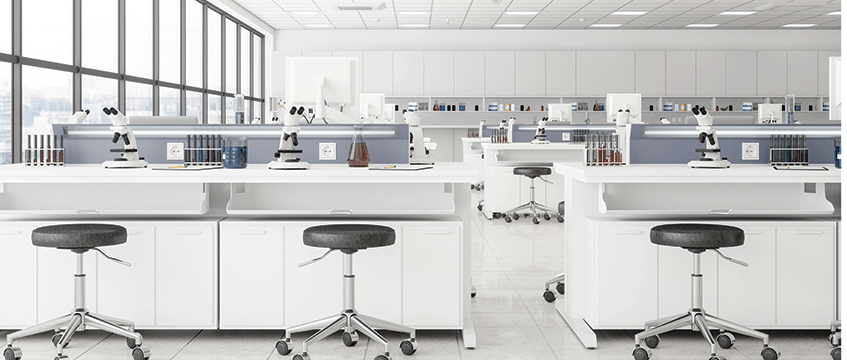Experts have cautioned that lab-enabled office spaces could become prematurely obsolete without industry-standard specifications, in a new report focusing on decarbonising life sciences schemes.
Researchers at project manager 3PM and design studio GXN warned that the issue is particularly paramount given the rise in speculative developments and retrofits in mature markets. As such, occupiers may quickly relocate to better-specified spaces as more stock comes out of the ground.
James Buckley-Walker, partner at 3PM, said: “We wanted to undertake this project to gain a deep understanding of how life science buildings run and where we can help the industry make a meaningful and scalable change.”
The report, titled Transforming to Zero: Changing Behaviours for Decarbonising Laboratories, stated that delivering a lab-enabled facility that may later transition back to office use or other functions raises questions about the practicality and sustainability of such investments.
The research also questioned the long-term sustainability benefits of lab-enabled spaces versus the upfront environmental costs involved.
It noted that such spaces are often used for lower-specification labs or typical office purposes, while their building designs tend to have higher embodied carbon compared with traditional office buildings.
3PM and GXN cited academic findings that show labs contribute to 2% of the world’s plastic waste and between 4% and 5% of global greenhouse gas emissions.
The researchers said: “Compared to offices, lab-enabled buildings tend to have higher embodied carbon due to the additional materials and complex systems required to support anticipated laboratory functions that may not be required in the future.”
Adopting a “less-is-more mentality” could help optimise space utilisation and functionality, according to the report. The findings have shown the most sustainable building design decisions are made during a later stage of development when there is a degree of clarity about occupier types and needs.
The authors of the report have called for life sciences investors and developers to prioritise durability and energy efficiency in building systems and high-quality, low-maintenance infrastructure to reduce carbon footprints.
The report also advised that developing generic labs for a wider range of occupiers could help futureproof the assets. Smart zoning and servicing as well as a flexible interior could help to develop longer-lasting buildings.
To create additional value, a design could be built on a modular lab system where all aspects are plug-and-play.
Outside of development, researchers said customisable leasing options and flexible terms could help boost sustainability across the sector, by helping businesses avoid overcommitting to excessively large and overbuilt spaces despite uncertainty around their growth forecasts.
Understanding demographics can also help shape demand for low-carbon laboratories, according to the research which found that the younger generation of scientists have a heightened awareness of environmental issues and preference for eco-friendly products and services.
Kåre Stokholm Poulsgaard, partner and head of innovation at GXN, said: “What is essential for us is that this initiative becomes a driver for meaningful change, so we are eager to partner with and assist interested organisations to implement sustainable practices in their labs and buildings.”
Photo © Getty Images/iStock
Send feedback to Evelina Grecenko
Follow Estates Gazette











